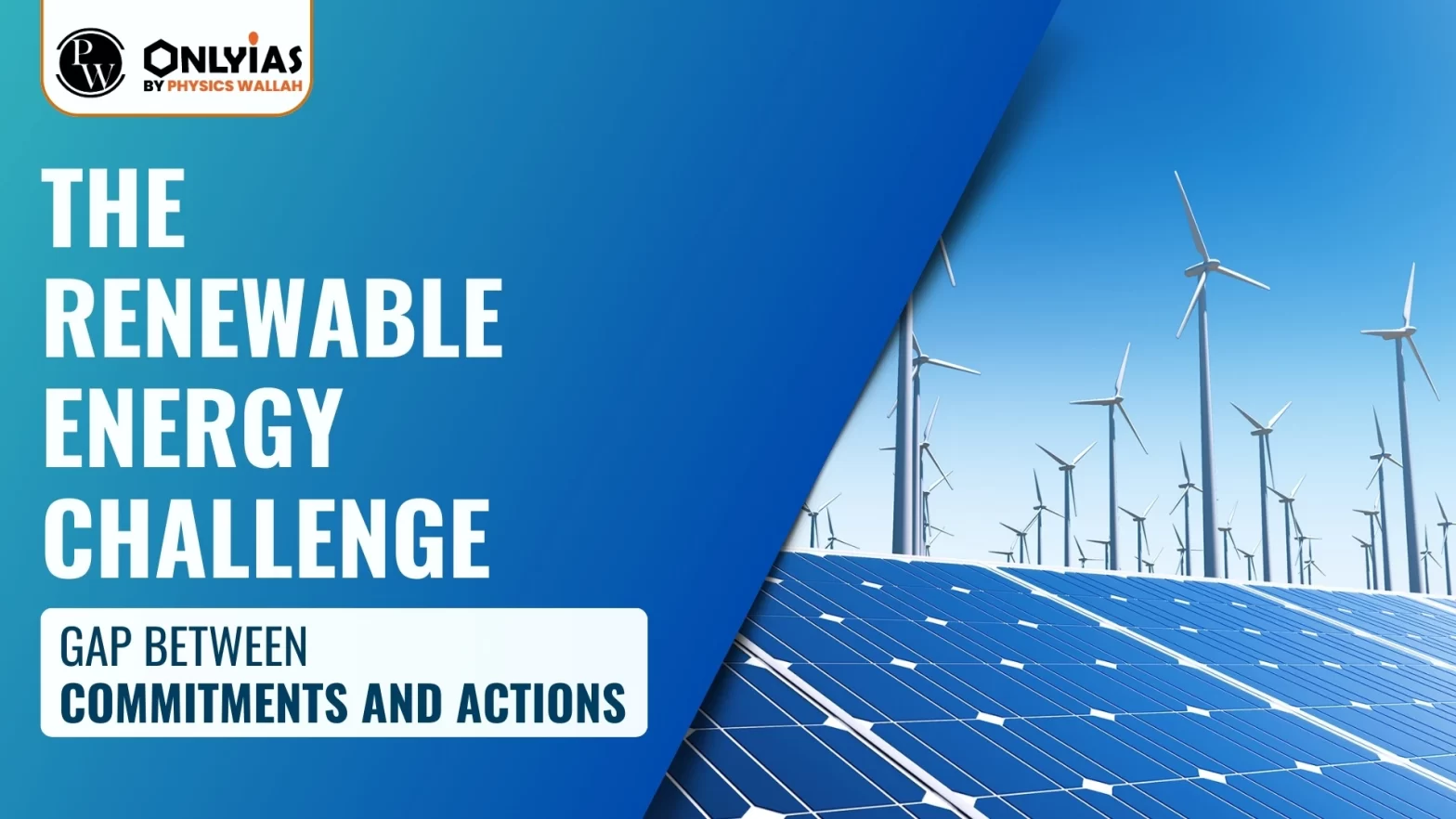Context: This article is based on an Editorial “Honest reckoning: On the reality behind the commitment to renewable energy” Which was published in the Hindu. The COP28 Climate Summit is discussing limiting the half-degree rise beyond 1°Celsius (C) (as that 1°C is now crossed).
What are the key aspects of the Paris Agreement?
- The Paris Agreement: In 2015, the Paris Agreement which is a legally binding international treaty on climate change, commits countries to limit the global average temperature rise to well below 2°C above pre-industrial levels, and to aim for 1.5°C.
- Endorsement of the Target: In 2018, it was endorsed as a global target by the Intergovernmental Panel on Climate Change (IPCC).
- To Prevent Climate Crisis: The 1.5°C target is the global climate target to limit warming to said level by 2100, to prevent the planet from slipping into further climate crises.
What steps have been taken to transition to renewable energy?
- Abandon of Using Coal: The United States joined 56 other countries in Dubai in a commitment to completely renounce coal for its energy use, by 2035.
- The Global Renewables and Energy Efficiency Pledge: While still a draft text, it asked for a commitment to tripling renewable energy capacity by signatories.
- India’s Commitments: India has positioned itself as a champion for renewable energy.
- At COP-26, in 2021, the Prime Minister of India announced a new 5-point set of targets (Panchamrit):
- India will increase its non-fossil fuel energy capacity to 500 gigawatts (GW) from the current 170 GW by 2030.
- It will meet 50% of its energy requirements from renewable sources by 2030.
- The total projected carbon emissions will be reduced by 1 billion tonnes from now through 2030.
- The carbon intensity of its economy will be brought down to less than 45%.
- India will achieve its target of Net Zero by 2070.
Also Read: NDC Synthesis Report For 2023: UNFCCC
What concerns are emerging regarding global emission reduction pledges?
- Lack of Active Adaptation: The paradox is that even after various commitments to renewable energy, countries are not, as of now, actively adapting to replace fossil fuels.
- A High Fossil-Fuel Backup by Developed Countries: Despite making commitments to give up coal, Developed Countries often have other large, fossil-fuel resources as backup.
- Use of Alternative Greenhouse Gases Emitters: The U.S. uses at least 55% of its energy from oil and gas and plans to produce more of it in 2030 than at present.
- Voluntary Basis: While India has formally articulated its 2030 targets as nationally determined contributions (NDC), it still has reiterated several times that it could not be forced to give up certain fuels.
- Nearly 70% of India’s greenhouse gas emissions are from coal-fired plants.
- Insufficient Pledges: Global pledges to cut emissions are insufficient to achieve the target.
What steps are required to enhance the efficiency of renewable energy?
- Tripling Renewable Energy Efficiency: Current estimates are that to limit warming to 1.5°C, the world requires three times more renewable energy capacity by 2030 or at least 11,000 GW.
- The global consensus was first formally articulated in the New Delhi Leaders’ Declaration at the G-20 summit in Delhi.
- Global Inclusion: Every nation is required to come up with a positive attitude with full intentions and actions.
- In the Dubai summit, it was perceived that the global convention on tripling renewable energy was endorsed by the larger group of about 190 countries, however, only 118 countries have endorsed it.
- Also, two major countries, i.e., India and China have not signed it.
Conclusion:
Rather than just making rules and laws on paper, the time has come for an honest commitment and actions to replace existing and future fossil capacity with clean energy.
| Prelims Question (2018)
Momentum for Change: Climate Neutral Now” is an initiative launched by
(a) The Intergovernmental Panel on Climate Change
(b) The UNEP Secretariat
(c) The UNFCCC Secretariat
(d) The World Meteorological Organization
Ans: (c) |
![]() 6 Dec 2023
6 Dec 2023

